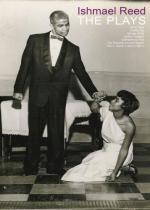|
This section contains 14,847 words (approx. 50 pages at 300 words per page) |

|
SOURCE: Rushdy, Ashraf H. A. “Ishmael Reed's Neo-HooDoo Slave Narrative.” Narrative 2, no. 2 (May 1994): 112-39.
In the following essay, Rushdy explores the role of the Neo-HooDoo slave narrative in Flight to Canada, contending that the novel is Reed's “most considered aesthetic enactment of Neo-HooDoo religious principles and also his most sophisticated representation of the motivation governing his parodic impetus.”
When the parody is better than the original a mutation occurs which renders the original obsolete. Reed's Law.
—Ishmael Reed, Shrovetide in Old New Orleans
“Reed's Law” is a counterintuitive statement of how intertextual relations are established and how they can operate. It demands that we see the relationship between a parodic text and its “host” text in new ways. “Reed's Law” is, therefore, a fitting general code through which we can appreciate Ishmael Reed's entire career since one of the noteworthy features of that career is Reed's insistence that...
|
This section contains 14,847 words (approx. 50 pages at 300 words per page) |

|


